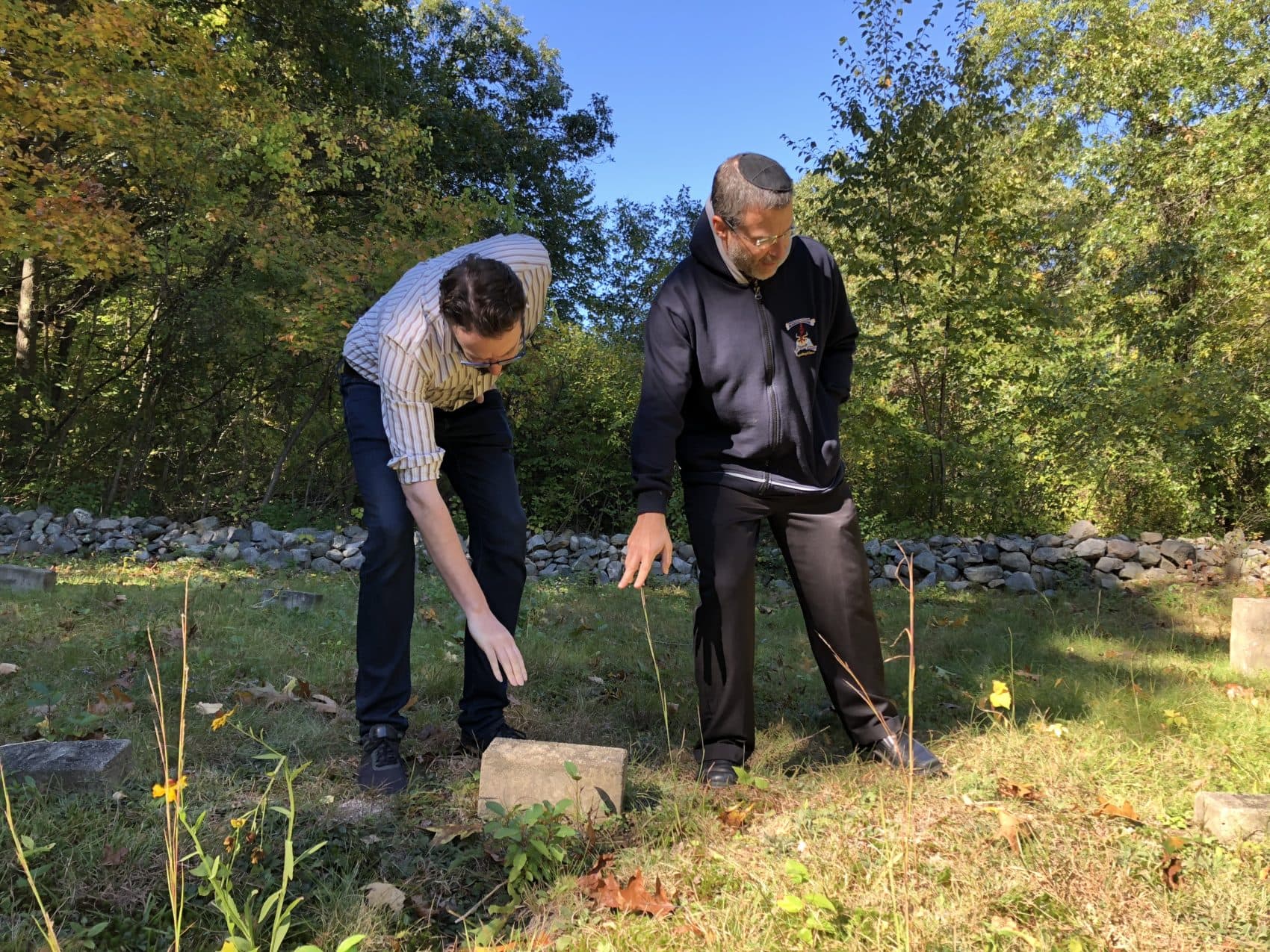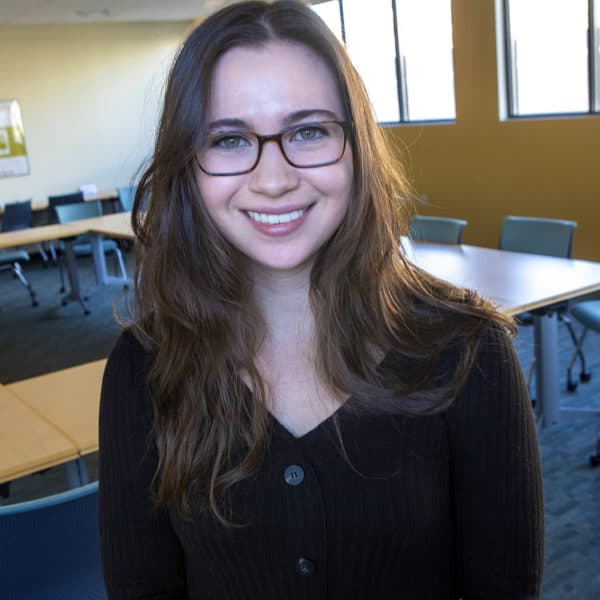Advertisement
Hundreds Buried In Nameless Graves In Waltham ID'd By Local Historian And High-Schoolers
ResumeBeyond a patch of deep woods off Trapelo Road in Waltham, Yoni Kadden follows a dirt path and stops once the trail opens.
On the edge of the clearing, he explains that we're here to see someone with whom Kadden has become recently acquainted.
“Let’s see here," Kadden says, walking past a low stone wall and scanning the ground. “That looks like C1 — [he's] Ralph O’Connell.”
There lies O'Connell. Kadden has brought us to Metfern Cemetery.
Kadden, a teacher at Gann Academy, a Jewish high school in the city, is here to explain the work of Alex Green, a fellow at Harvard Law School and local historian, who has for years made it his mission to solve a 60-year-old question: Who is buried in Metfern Cemetery?

It's the final resting place of hundreds of people who, like O'Connell, lived in one of two now-defunct institutions in Waltham for people with mental and physical disabilities. Most are buried beneath cinder block-like stones half-sunken into the earth. Those graves — the ones that have not wholly crumbled with time — bear no names, but similar markings: C12, C18, C21. P8, P13, P7.
"C" for Catholic. "P" for Protestant. And a number, for the order in which they were buried.
It's not much information to go on. But Green, using newly released town records, has discovered the identities — and is now telling the stories — of all 298 people who between 1947 and 1979 were buried by the Metropolitan State Hospital and the Walter E. Fernald State School.
Offering Details And 'Dignity' To Metfern's Buried
Reconstructing the details of 298 lives was a daunting task, even for Green. So what began as one man's quest to put names to these anonymous graves has turned into a collaboration with history students at the Gann school.
Roughly 50 students are now enrolled in a "disability history" course led by Green, Kadden, and Kevin Levin, another teacher at Gann. This year, each student was assigned the name of one person buried in the Metfern to research.
Bex Steinberg, a junior, says that for her, the research is more than just another homework assignment.
"The fact that they were buried here in Waltham with no names — no anything really ... we're just trying to bring some dignity to the project," she says. "It's just really powerful."
Using census data, Ancestry.com and old and new town records, students have built profiles for every single individual buried in the cemetery.
"There's like this whole little world we had no idea about," Steinberg adds. "It's just kind of incredible to realize that these people had lives and families and everything. And they were living in this space which most people don't even know exists."

Among the names Steinberg and her classmates have researched are Lucian Goyette, Eliza McCray, Archibold Chaffley, Elizabeth Doherty — the list goes on. Profiles exist for nearly all of the once-forgotten. Green has collected their names and information in a spreadsheet that gets more and more personal.
"It includes who their parents were, what country they came from, if they ever worked jobs, what jobs they had, if they were immigrants, whether they were veterans or not," Green lists off. "It basically tells the story of someone's life in a single row."
The document also includes details about how each person died at the Metropolitan State Hospital and The Fernald School.
An 8-year-old boy named George Barros fell out of his wheelchair, fractured his skull and died. A 66-year-old man named Claude Moran was scalded in a shower and died a few days later from his burns. Daniel Mower spent almost 47 years at the Fernald School before he succumbed to tuberculosis.
These stories are part of a grim history that looms over the Fernald, where residents in the '40s and '50s were fed radioactive oatmeal for a research study.
For Green, poring over reams of documents exploring the dark history of these institutions and the lives of the people who lived and died inside them has been an emotional experience.
"It's a lot of injustice to look straight on in the face, right?" says Green, sniffling. "It’s overwhelming."
Difficult as it is to learn about many of these stories, Green says Fernald's is complicated.
"The Fernald School was at times the first and greatest place for anyone with certain kinds of disability to get any help, and at other times one of the most monstrous places in our history — and at many points, both of those things at once for different people leading different lives on a different day in the place," he says.
Thanks this project, some of the family members of those buried here have been able to visit these once-anonymous graves.
Green says his work won't stop until he has produced profiles of all 298 people buried in the MetFern cemetery.
Correction: An earlier version of this story misspelled Yoni Kadden's name. We regret the error.
This segment aired on December 11, 2018.
